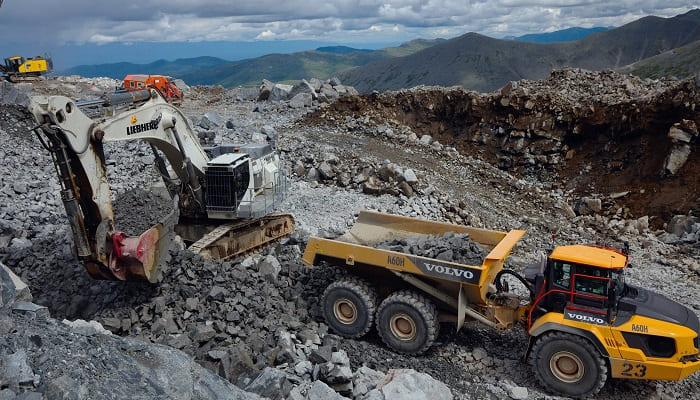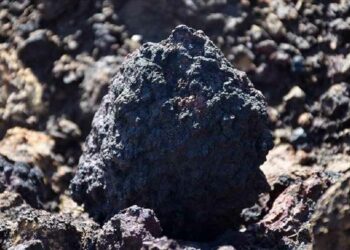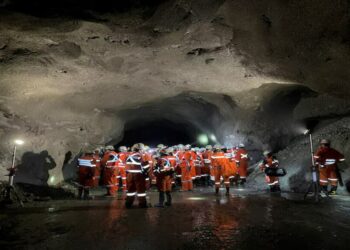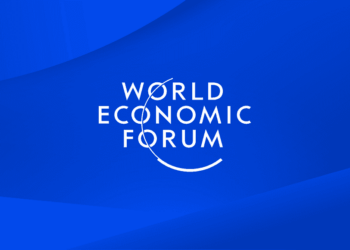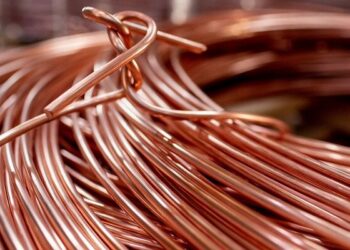While Russian metals may soon be banned from trading at the London Metal Exchange and from being stored at its warehouses, one of the country’s smartest tycoons – the Uzbek-born billionaire Alisher Usmanov –is looking to the East.
His new project, Udokan Copper in Russia’s Far East, is set to commence production next year and start exporting to China, which accounts for more than half of the world’s copper demand. The company operates a namesake deposit with nearly 27 million tonnes of copper reserves, making it one of the largest in the world.
Global demand for copper is set to double to almost 50 million tons a year by 2035, according to market research by S&P. Demand growth will be largely driven by the transition to the non- fossil fuel economy where copper will be used for electric cars, charging stations for them, solar panels, wind turbines and more. These products enabling the energy transition will create additional demand for copper, which is irreplaceable in electric applications. (Aluminum has inferior properties, while silver is too costly).
Despite the forecasted growth in demand, the copper price has fallen from more than $10,000 per tonne in March to about $7,600 per tonne currently because of concerns about the possibility of a global recession. Tight supply-demand balance for physical copper and low copper inventory levels at warehouses haven’t helped to buoy prices. This is a negative sign for the industry, as it reduces the incentives for producers to invest in the development of new copper deposits.
There are also challenges causing disruptions of copper supply from existing mines in Chile and Peru, the two largest copper-producing nations in the world. These include declining ore grades, mining safety and environmental issues, as well as protests of indigenous communities who seek additional benefits from mining operations on their territory. There is also the ongoing, so-called “resource nationalism”, with governments of copper-rich countries seeking to increase taxes or license payments for mining firms.
In this situation, Udokan will become one of the few projects globally entering the market with significant new volumes of copper supply. Udokan Copper is using a $1.79 billion loan to build its production complex, which includes an ore-processing plant and a hydrometallurgical plant. This combination of technologies will allow to treat different types of ores – sulfide, oxide and mixed. At the moment, production buildings are being completed at the Udokan site, and state- of-the-art technological equipment is being installed and tested. Commercial production with an annual capacity of 135,000 tonnes of copper – part in concentrate, part in cathodes – is set to start in 2023.
While the U.S. is already in recession and the European economy is also slowing, Chinese GDP is expected to grow by 4.5% next year. China produced half of the world’s electric vehicles last year and aims for EVs to reach 40% of its car production by 2030. China is also seeking to more than double its renewable energy capacity to 1,200 gigawatts by 2030 as part of the plan for achieving net-zero emissions by 2060. This means that the Chinese economy won’t be cooling down and will need additional volumes of copper.
Udokan Copper will be there to respond to the demand. Located just across the border, it will ship copper to Northern China via a direct railroad link. Udokan can also use Russian seaports on the Pacific Ocean to ship to Southern China and other Asian markets. The company is working on a feasibility study to expand production capacity to 400,000 tonnes of copper a year, which would make Udokan Copper leading player in the global market.
Udokan Copper takes a responsible approach towards environmental issues. It has chosen a hydrometallurgical production method instead of pyrometallurgy, which generates dangerous emissions. The company will rely on renewable energy to develop the second stage of the project. To achieve this, it signed an agreement with Russian hydropower producer RusHydro earlier this year. Udokan aims to reduce the carbon intensity of its operations by 75% by 2035. This will directly reduce environmental footprint for Udokan itself, while also resulting in the indirect reduction of carbon dioxide emissions for its Chinese customers. Given the trends currently gaining momentum, green copper can be sold at a premium in the future.



